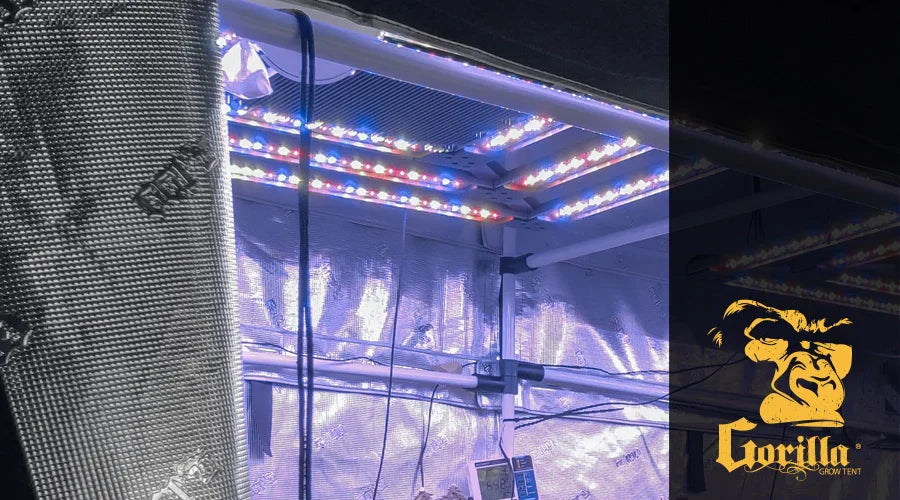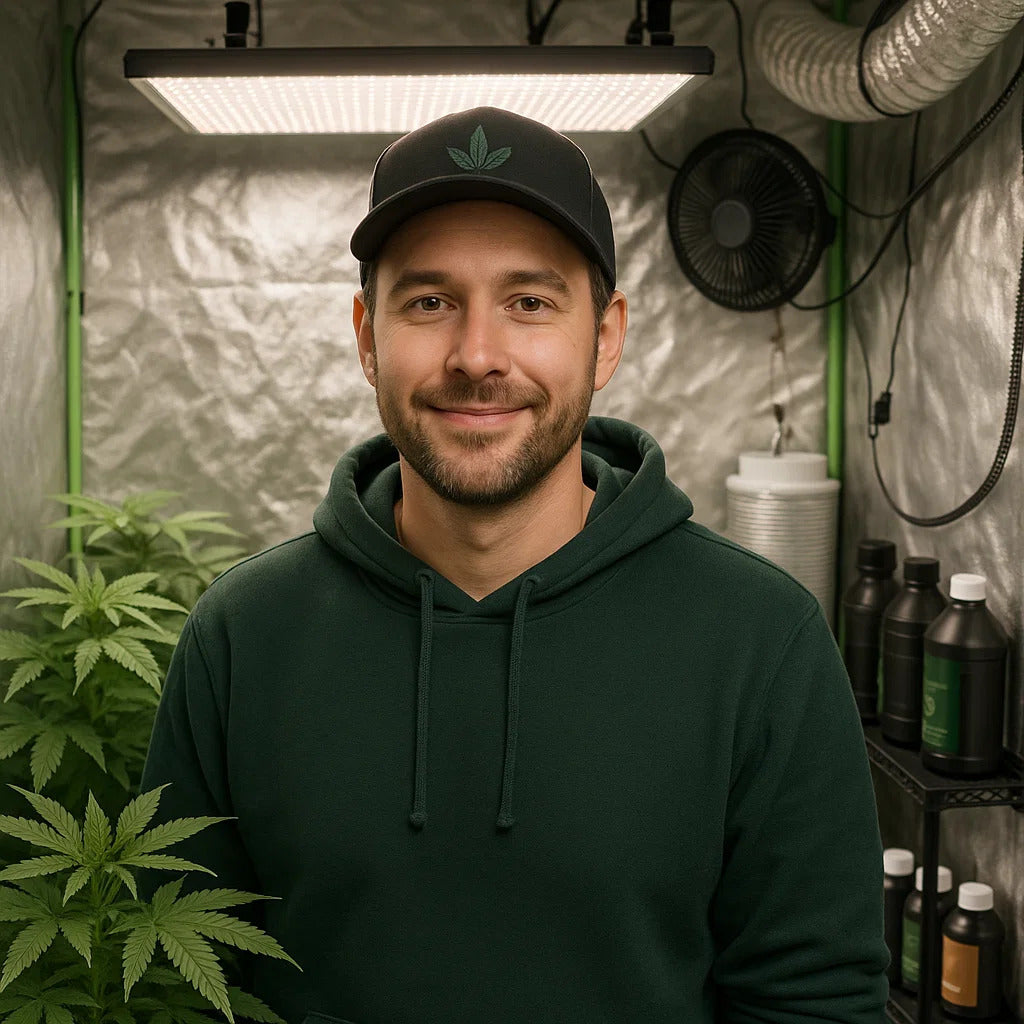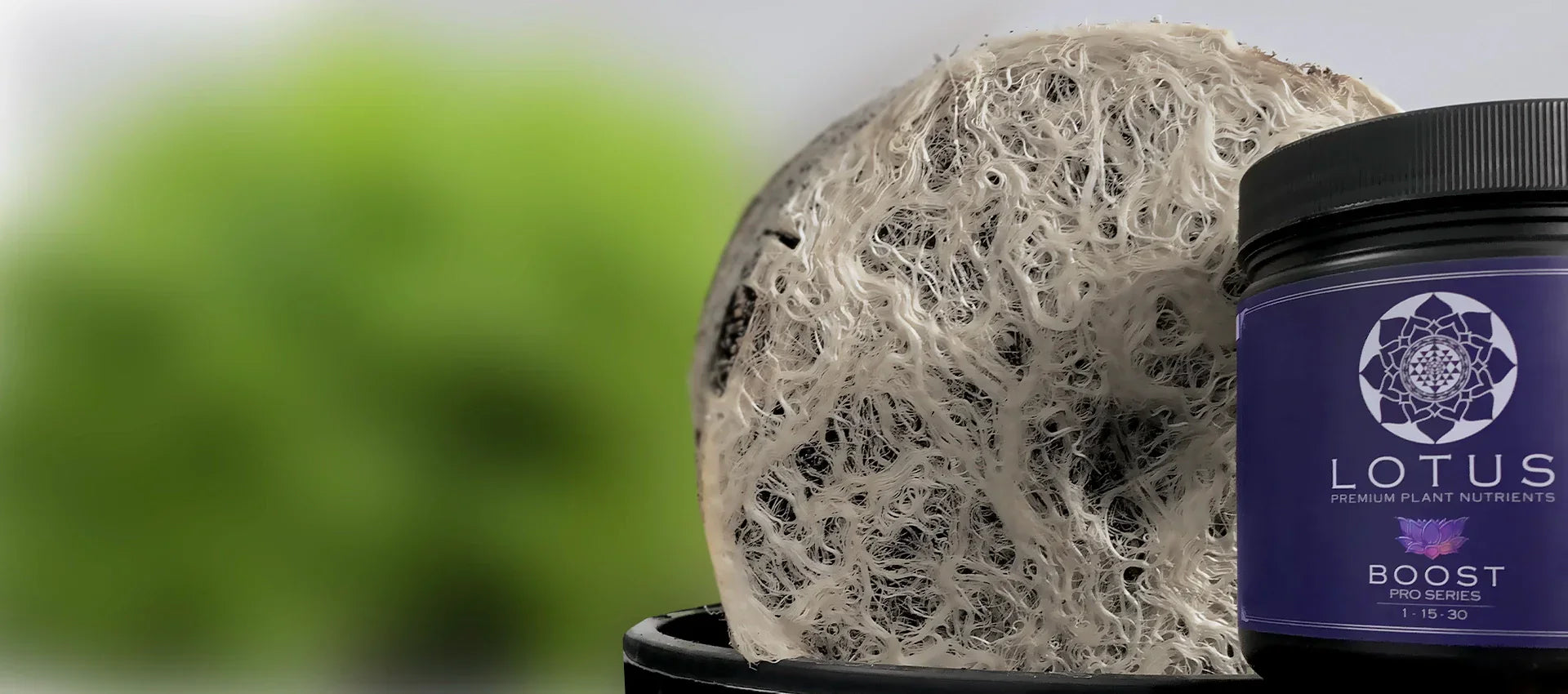
How Far Should LED Grow Lights Be From Plants
How Far Should LED Grow Lights Be From Plants: Finding the Perfect Balance
Determining the ideal distance between LED grow lights and plants is one of the most critical factors for successful indoor growing. Too close, and you risk light burn and heat stress; too far, and your plants become leggy while producing smaller yields. With advanced lighting technology like GXi LED Grow Lights, understanding proper light positioning becomes even more important to maximize the benefits of their cutting-edge features. This comprehensive guide will help you position your grow lights for optimal results across every stage of plant development.
Understanding the Science Behind LED Grow Light Distance
The Inverse Square Law: Why Distance Matters
The relationship between light intensity and distance follows the inverse square law, which has profound implications for your indoor garden:
- When you double the distance from the light source, intensity decreases to one-fourth of its original value
- Conversely, moving lights half the distance increases intensity four times
- This exponential relationship means small distance adjustments can significantly impact plant growth
This scientific principle explains why finding the precise hanging height is so crucial. Unlike older lighting technologies with intense heat output that mandated greater distances, modern LED grow lights like the GXi series can be positioned closer to plants while still providing ideal growing conditions.
Light Intensity and PPFD Measurements
Professional growers measure light intensity using Photosynthetic Photon Flux Density (PPFD), expressed in micromoles per square meter per second (μmol/m²/s). This quantifies the number of photosynthetically active photons hitting your plant canopy:
- Seedlings and clones: 200-400 μmol/m²/s
- Vegetative growth: 400-600 μmol/m²/s
- Early flowering: 600-900 μmol/m²/s
- Peak flowering: 900-1100 μmol/m²/s
GXi LED Grow Lights deliver precisely calibrated light intensity across their coverage area, with the ability to adjust their tri-channel spectrum to match each growth phase perfectly. This means you can maintain optimal PPFD levels while adjusting spectrum rather than constantly changing light heights.
Growth Stage-Specific Distance Guidelines
Seedling and Clone Stage: Gentle Beginnings
Young plants and newly rooted clones are particularly vulnerable to light stress, requiring more conservative light positioning:
- Recommended distance: 24-30 inches (60-75 cm)
- Signs of proper distance: Seedlings grow short, sturdy stems with healthy cotyledons
- Warning signs of too close: Yellowing leaves, stunted growth, or cupping of leaves
- Warning signs of too far: Elongated, weak stems as plants stretch toward light
During this delicate stage, GXi LED Grow Light's customizable spectrum technology allows you to emphasize blue wavelengths while reducing overall intensity, providing gentler light that promotes strong root development without stress.
Vegetative Stage: Building Plant Infrastructure
As plants develop their vegetative structure, they require more intense light to build sturdy stems and lush foliage:
- Recommended distance: 18-24 inches (45-60 cm)
- Signs of proper distance: Compact internodal spacing, robust stem development, and deep green leaves
- Warning signs of too close: Upward curling leaves, light bleaching at leaf tips, or stunted new growth
- Warning signs of too far: Elongated stems, smaller leaf development, and overall slower growth rate
The GXi LED Grow Light's optimized spectrum for vegetative growth delivers enhanced blue wavelengths at this stage, encouraging tight internodal spacing and sturdy structural development that will support heavy flower production later.
Early Flowering Stage: Transition Period
As plants transition to flowering, they undergo significant hormonal changes that affect their light requirements:
- Recommended distance: 18-24 inches (45-60 cm)
- Signs of proper distance: Formation of early flower sites throughout the canopy
- Warning signs of too close: Bleached or burnt uppermost leaves and buds
- Warning signs of too far: Limited flower site development, especially in lower portions
During this transition, the GXi LED Grow Light's tri-channel control allows growers to gradually shift the spectrum toward enhanced red wavelengths while maintaining ideal light intensity, signaling to plants that it's time to focus energy on flower production.
Peak Flowering Stage: Maximizing Yields
During peak flowering, plants benefit from intense light with specialized spectral components:
- Recommended distance: 12-18 inches (30-45 cm)
- Signs of proper distance: Dense, resinous flower development throughout the canopy
- Warning signs of too close: Foxtailing, bleached buds, or burnt leaf tips
- Warning signs of too far: Airy, less-dense flowers and reduced resin production
This is where the GXi LED Grow Light's BudBooster IR and TrichomeForce UV technologies shine—their dual-channel IR/UV control allows growers to trigger maximum resin production and enhance terpene profiles at precisely the right moments without changing light height.
Light Wattage and Its Impact on Proper Distance
Understanding Light Intensity Based on Wattage
The wattage of your LED grow light significantly impacts how close it should be positioned to your plants:
- Low-power LEDs (under 200W): Can generally be placed closer (12-24 inches)
- Medium-power LEDs (200-400W): Require moderate distance (18-30 inches)
- High-power LEDs (400W+): Need greater distance to prevent light stress (24-36 inches)
The GXi LED Grow Light series offers multiple models designed for different coverage areas:
- Xi220: Optimal for 2'x2' to 2'x2.5' spaces
- Xi330: Ideal for 2'x3' to 3'x3' growing areas
- Xi420: Perfect for 2'x4' to 3'x4' configurations
- Xi750: Designed for 4'x4' to 5'x5' coverage
Each model delivers precisely calibrated light intensity for its target footprint, helping growers maintain ideal light levels without constant adjustments.
Footprint and Coverage Area Considerations
The effective coverage area of your LED grow light affects optimal hanging height:
- Higher mounting = larger footprint but lower intensity
- Lower mounting = smaller footprint but higher intensity
- Edge areas receive less light than the center
GXi LED Grow Lights feature advanced optics that provide exceptional uniformity across their specified coverage areas, minimizing hot spots and ensuring plants receive consistent light levels from center to edge.
Advanced Factors Affecting Ideal LED Distance
Spectrum Quality and Light Penetration
Not all LED grow lights are created equal when it comes to spectrum quality and canopy penetration:
- Full-spectrum LEDs with balanced wavelengths typically allow for closer placement
- Lights with excessive infrared output may need greater distance to prevent heat stress
- Higher quality diodes with focused optics provide better canopy penetration
The GXi LED Grow Light's Targeted Full Spectrum technology delivers wavelengths specifically engineered for plant development rather than simply adapting general-purpose LEDs. This plant-focused design optimizes light penetration while minimizing wasted energy.

Ambient Growing Environment
Your growing environment influences optimal light placement:
- Higher ambient temperatures require greater light distance
- Lower humidity levels may require increased distance to prevent transpiration stress
- CO₂-enriched environments can handle higher light intensities at closer distances
With the GXi Wireless Grow Intelligence system, GXi LED Grow Lights can automatically adjust intensity based on environmental conditions. Their sunrise/sunset technology gradually increases and decreases light intensity, preventing light shock and creating more natural growing conditions.
Plant Species and Varieties
Different plant species have evolved under varying light conditions and therefore have different requirements:
- High-light plants (tomatoes, peppers) can handle closer LED distances
- Medium-light plants (leafy greens, herbs) benefit from moderate distances
- Low-light plants (many houseplants) require greater distances
The GXi LED Grow Light's customizable spectrum control allows growers to tailor light recipes to specific plant varieties, optimizing growth for everything from leafy greens to flowering plants.
Implementing the Perfect LED Height Strategy
Using Light Meters for Precision
For truly precise light positioning, consider using a PAR/PPFD meter:
- Position your meter at plant canopy level
- Take readings at multiple points across the growing area
- Adjust height until readings match recommendations for your growth stage
- Re-measure periodically as plants grow closer to lights
While these measurements provide valuable data, the GXi LED Grow Light's preset spectrum profiles—developed by experienced cultivators—simplify the process, delivering optimized light recipes without requiring constant monitoring and adjustment.
Creating a Light Height Adjustment Schedule
Develop a proactive approach to light height management:
- Document initial light height
- Create a calendar for regular height checks based on expected plant growth rates
- Establish height adjustment increments (typically 2-3 inches at a time)
- Note plant responses to adjustments for future reference
With the GXi Wireless Grow Intelligence, many of these adjustments can be automated through the Gorilla Grow Tent App, which provides professional light schedules and environmental protection without requiring additional controllers.
Managing Light Height in Multi-Tiered Canopies
Plants naturally develop different canopy heights, creating challenges for light distribution:
- Plant training techniques: Employ methods like low-stress training (LST), screen of green (SCROG), or topping to create even canopies
- Selective pruning: Remove lower branches receiving minimal light to focus plant energy
- Supplemental lighting: Add side lighting for taller plant configurations
GXi LED Grow Lights' uniform light distribution helps address canopy variation, while their reduced heat output allows them to be positioned closer to plants without causing stress.
Common LED Distance Mistakes and How to Avoid Them
Error #1: One Height Fits All Approach
Many growers maintain the same light height throughout the growing cycle, missing opportunities to optimize for each stage:
- Solution: Create a stage-specific height strategy using the guidelines provided above
- GXi Advantage: Rather than constantly adjusting height, use the GXi LED Grow Light's tri-channel spectrum control to modify light quality and intensity for each growth stage
Error #2: Ignoring Plant Signals
Plants provide clear feedback about light positioning, but inexperienced growers often miss these signs:
- Solution: Learn to recognize light stress indicators and check plants daily for feedback
- GXi Advantage: The GXi LED Grow Light's gradual sunrise/sunset technology reduces light stress risk by preventing sudden intensity changes
Error #3: Forgetting Edge Plants
Growers often position lights for optimal center coverage, leaving edge plants with insufficient light:
- Solution: Measure light intensity at canopy edges and adjust height to ensure adequate coverage
- GXi Advantage: GXi LED Grow Lights provide exceptional uniformity across their coverage area, minimizing this common issue
GXi LED Grow Light: Advanced Features for Optimal Positioning
Tri-Channel Spectrum Control
The revolutionary tri-channel control system in GXi LED Grow Lights transforms how growers approach light positioning:
- Targeted Full-Spectrum Channel: Provides balanced light for vegetative growth, promoting strong roots and healthy foliage
- BudBooster IR Technology: Increases flower density and overall yield weight during bloom phases
- TrichomeForce UV: Triggers maximum resin production and enhanced terpene profiles
This channel separation allows growers to maintain ideal light height while adjusting spectrum intensity based on plant needs, rather than constantly moving lights.
GXi Wireless Grow Intelligence
The integrated app control takes lighting management to new levels:
- Pro-Level Light Schedules: Select from calibrated presets for each growth stage or create custom light cycles
- Sunrise/Sunset Technology: Gradually ramp light intensity up and down to prevent light shock
- Environmental Protection: Automatically adjust light intensity based on temperature thresholds
- Data Collection: Track light conditions over time to optimize future grows
This intelligent control system reduces the need for constant height adjustments by providing precise intensity control from your smartphone.
Heat Management Advantages
Traditional grow lights generate significant heat that impacts minimum safe distances. GXi LED Grow Lights offer superior thermal management:
- Reduced Heat Output: Up to 25% less heat compared to comparable lights
- Remote Driver Option: Optional driver mount extension cord creates more vertical space
- Aircraft-Grade Aluminum Heat Sinks: Superior heat dissipation for consistent performance
- Strategic Thermal Design: Directs heat away from plants while maintaining perfect light intensity
These thermal advantages allow GXi LED Grow Lights to be positioned closer to plants without causing heat stress, maximizing usable growing space.
Conclusion: Achieving Perfect Balance with GXi LED Grow Lights
Finding the ideal distance between LED grow lights and plants requires balancing multiple factors—growth stage, light intensity, spectrum quality, and environmental conditions. While the general guidelines provided here offer excellent starting points, the true advantage of GXi LED Grow Lights lies in their ability to adapt to plant needs without constant height adjustments.
The combination of tri-channel spectrum control, wireless intelligence, and superior thermal management creates a lighting system that maximizes plant genetic potential while simplifying the growing process. Rather than constantly moving lights to achieve the right conditions, growers can make precise spectral adjustments through the intuitive app interface, delivering exactly what plants need at each growth stage.
By understanding the principles of proper light positioning and leveraging the advanced capabilities of GXi LED Grow Lights, indoor gardeners can achieve professional-quality results with greater convenience and consistency than ever before. Whether you're growing leafy greens, flowering plants, or anything in between, the perfect balance of light intensity and quality is now within reach—without the constant ladder climbing of traditional light management.

Lena Myles
I'm a mushroom enthusiast and home cook based in Oregon. I'm passionate about foraging and creating fungi-focused recipes, especially delicious, plant-based dishes using gourmet mushrooms like trumpet, shiitake, and oyster. When I’m not in the kitchen, you’ll usually find me wandering the woods in search of new wild flavors.



